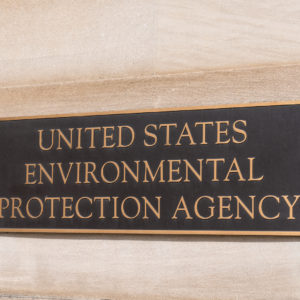Believe it or not, the Environmental Protection Agency is considering digging up radiological waste and placing it on trains and shipping it on America’s railways to one or more new locations. Unnecessarily excavating and transporting radiological waste is both dangerous and costly. Every American has reason to be concerned because this is no longer simply a “local issue.”
The West Lake Landfill, near St. Louis, Missouri, was a farm until 1939, when it became a limestone rock quarry. By the early 1950s, it became a landfill. In 1973, part of the landfill was contaminated with soil that had been mixed with leached barium sulfate residues — a low-level radioactive byproduct left over from the Manhattan Project. Fortunately, numerous scientific studies, including those by the Centers for Disease Control and Prevention, the EPA and state agencies, have found that the waste poses no danger to public health. So while landfills are often eyesores and can stink, West Lake is not a health risk.
Nonetheless, the EPA identified the landfill as a Superfund cleanup site in 1990. For the next 28 years, the EPA studied the problem, but did nothing. Experts, including the EPA, thought the best course of action was to seal the contaminated soil and monitor surrounding air, soil and water. The cost of this remediation would be paid by those who were at fault for the contamination — not the taxpayers. This solution made a lot of sense. Sadly, it wasn’t implemented quickly.
Some locals who were understandably frustrated by the EPA’s bureaucratic stiff-arm became infuriated and labor unions saw a chance to get new, lucrative government contracts in the cleanup. So a newfangled plan to dig up the landfill and remove 70 percent of the contaminated soil via railway began to gain support.
The contaminated soil is buried in the landfill and poses no health risk — and once capped and monitored, it will never be a risk. But if the contaminated soil is dug up and loaded into trucks and then onto railway cars and then transported along America’s railway system to new locations, the risk to Americans all along the travel routes is dramatically increased. This could lead to a catastrophe, whereas capping the soil endangers no one and saves money.
It is reasonable to wonder if this proposal isn’t simply an attempt to give angry local activists a concession for having to wait 28 years for action. Or perhaps the recent EPA leadership troubles contributed to this misguided idea. What we do know is that this excavation and massive transportation plan is risky, dangerous and expensive. It makes one wonder if the EPA hasn’t lost its collective mind.
The Coalition to Keep Us Safe — a local organization of citizens, farmers and community leaders that have been advocating for a quick and permanent solution — strongly supports the capping and monitoring solution. The coalition also strongly opposes digging up the landfill and transporting it elsewhere. The facts are on the coalition’s side.
First, even the EPA has determined that excavation is 54 times more dangerous because of possible transportation accidents. The National Transportation Safety Bureau, reports that nearly every two hours a person or vehicle is it by a train with nearly 1,000 deaths per year in train related accidents. About every 90 minutes a train collides with another object or is derailed. Almost every two weeks a train derailment leads to a chemical spill. According to the Department of Transportation, about 80 percent of railroad crossings do not have adequate warning systems. So stirring up buried contaminated soil and loading it in trucks and then on trains makes the likelihood of tragedy much greater — both locally and nationally.
Second, excavation would take much longer to complete — likely 13 years as opposed to two years for the capping and monitoring approach. Thirteen years of trains loaded with leached barium sulfate rolling on America’s railways is a bad idea.
Third, it would cost the taxpayers a great deal more to complete this long-term, less-safe solution — likely $620 million. And given government project cost overruns, it could be a great deal more.
Americans everywhere should be alarmed that the EPA would consider adopting a plan that substantially increases health risks to Americans everywhere —transporting those risks along America’s railways with the potential for derailment and accidents all along the way. This is why the EPA should no longer be in charge of cleanups. There is no way Missouri would have allowed this to go uncorrected for 28 years.

